While real progress was made at the COP26 Summit, the main conclusion drawn by the Glasgow Climate Pact was that further emissions cuts are required and need to be provided by the end of 2022. This is to ensure that countries are on track to meet the UN Paris Agreement’s target of net-zero by 2050.
In order to achieve these carbon reductions, the 2021 State of Climate Action Report, authored by the world’s top climate analysis coalition, Climate Action Tracker (CAT)* explains how: “In some industries, the technologies, practices, and approaches needed to accelerate decarbonization are well understood but have not yet seen the levels of investment and political support needed to rapidly scale up mitigation action.”
As polymeric repair composites and protective coatings fall into the bracket of “technologies” that can actively “accelerate decarbonization”, it could be argued that further investment into these systems could help many industries to ratchet up their carbon intensity reduction plans in line with the net-zero target.
*The CAT is backed by a number of organisations including the prestigious Potsdam Institute for Climate Impact Research in Germany.

COP26 Outcome: Further Emissions Cuts Needed
According to data from CAT, based on the goals made at the COP26 Summit, global warming is projected to rise to 2.4°C by 2050. Although this is an improvement on the 2.7°C rise that was projected prior to the conference, it is still way off the 1.5°C target.
To sum up the situation, the Report said: “The transitions required to avoid the worst climate impacts are not happening fast enough.”

As such, the Report identifies how it is imperative that transformations towards a net-zero future must occur throughout every sector of society at a pace that is far faster than recent trends.
Indeed, as the goals set at COP26 fell short on achieving the Paris Agreement’s net-zero target, countries are preparing to deliver on COP26’s request to “revisit and strengthen their current emissions targets to 2030 in 2022.”
The Outlook for Industries Including Power, Steel, Cement and Buildings
The CAT’s Report goes on to share statistics on the carbon intensity reductions that need to be made by numerous industries including power, steel, cement and buildings, amongst others, by 2030, in order to limit warming by 1.5°C by 2050.
These reductions include:
- The carbon intensity of electricity generation will need to reduce to 50–125 gCO2/kWh
- The carbon intensity of steel will need to decline by 25–30% (relative to 2015 figures)
- The carbon intensity of cement will need to decline by 40% (relative to 2015 figures)
- The carbon intensity of operations in select regions will need to decline by 45–65% in residential buildings and by 65–75% in commercial buildings (relative to 2015 figures)
Unlocking the Potential of Polymeric Materials for Carbon Mitigation
As part of the ever-growing arsenal of carbon mitigation technologies and initiatives, industrial coatings and repair composites can help industries, such as those outlined above, to achieve these reductions.
With a comprehensive range of polymeric systems including: epoxy repair composites, high-temperature coatings, liquid waterproof membranes, elastomeric roof coatings and pipe wraps, amongst others, these systems have been proven to not only repair and protect damaged assets across many different industries, but to also intrinsically improve them for the long term as well.
The environmental implications of this are astronomical. By bypassing the need to replace damaged assets and instead actively improving them, industries can make great strides in minimising their carbon footprints.

Economic Benefits of Investing in High-Performance Coatings and Repair Composites
Not only this, the Report also describes the need for “energy- and process efficiency practices [that] can be economically feasible and help drive industrial system transitions.”
As explained through a case study later in this article, investment into composite repair materials and industrial coatings is also an “economically feasible” option. By purchasing these systems, this mitigates the fees that can accumulate in the process of asset replacement. These fees include: the cost of the asset being replaced, the labor required during the removal, disposal and installation process and also the downtime that can be incurred during this procedure.
For these reasons, an increase in investment into these technologies would help many different industries in the process of ratchetting up their 2030 emissions reduction plans, in line with the net-zero emissions by 2050 scenario, in a way that is also financially advantageous.
Repair and Protection Polymeric Technology Honed over the Course of Almost 70 Years
For decades, companies such as Belzona, which was first established almost 70 years ago (on the 14th February 1952), have been developing polymeric materials to improve the “energy and process efficiency” of buildings, structures, machinery and equipment found across multiple different industries.
Examples of polymeric systems include:
Products such as high-performance coating, Belzona 1341 (Supermetalglide), can intrinsically improve pump efficiency by using hydrophobic technology to repel process fluids and reduce turbulent flow. This can create efficiency increases of up to 7% on new equipment and up to 20% on refurbished equipment.

The liquid waterproof membrane, Belzona 3111 (Flexible Membrane), has been certified by Energy Star and ETA-Danmark (European Technical Assessment) and has proven to provide excellent protection of roofs for in excess of 25 years.

Belzona 5871, a ‘cool-to-touch’ thermal insulation barrier reduces the amount of heat transfer through a surface, increasing the efficiency of equipment.
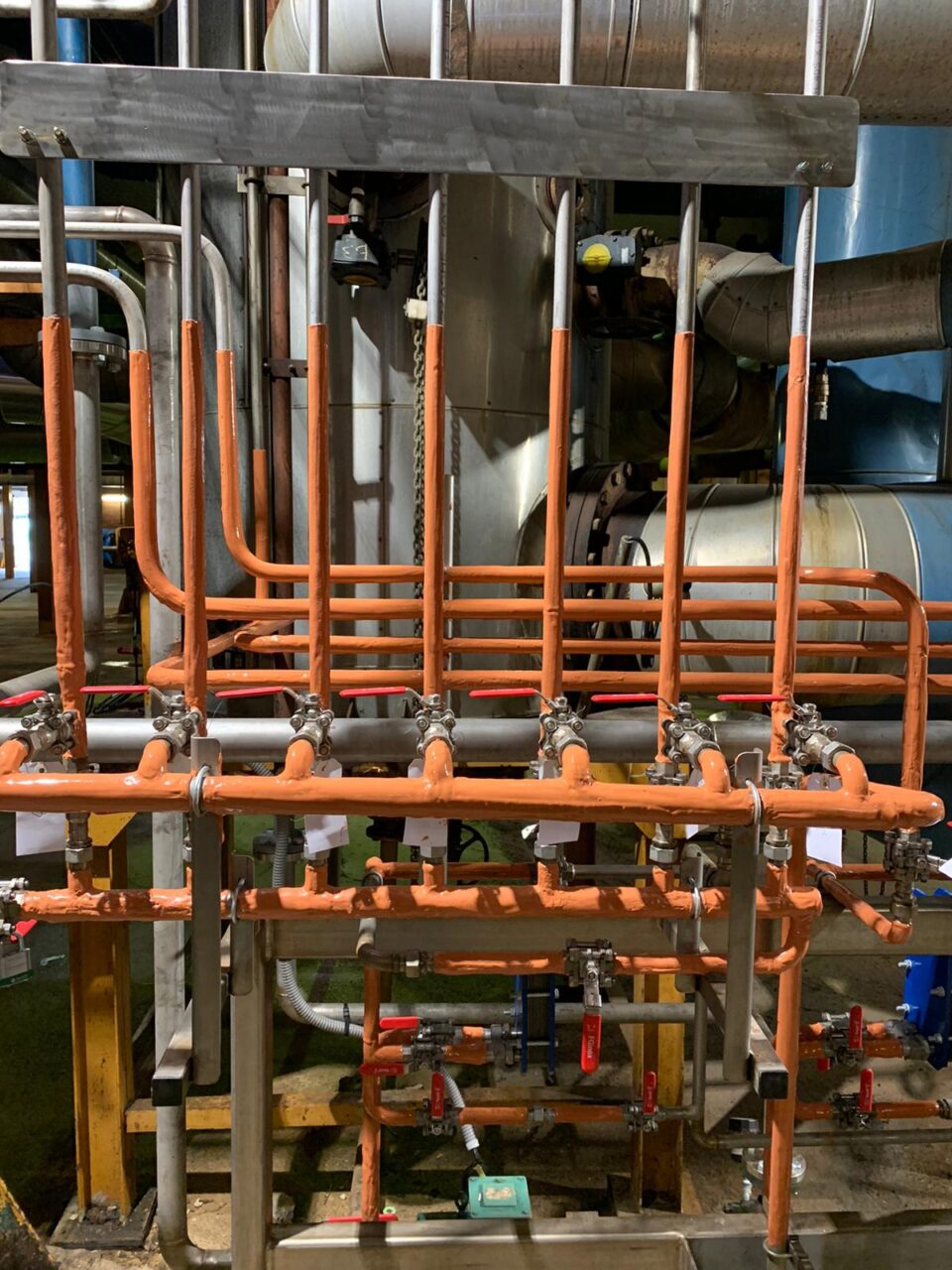
For immediate leak sealing, fast-curing materials such as the repair composite, Belzona 1221 (Super E-Metal), and epoxy paste, Belzona 1212 are ideal for emergency repair situations.

High strength, epoxy concrete repair products such as the epoxy repair composite, Belzona 4111 (Magma-Quartz), can quickly restore secondary containment areas and damaged concrete whilst providing excellent chemical and impact resistance, as well as compressive strength.
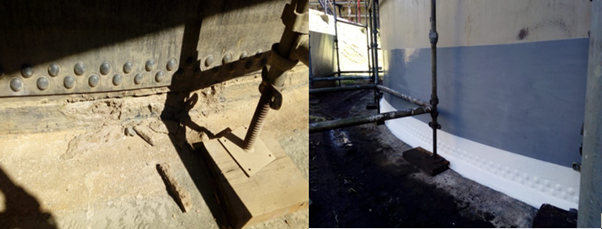
How Polymeric Systems can Help to Mitigate the Carbon Intensity of Steel
Another way to illustrate the carbon mitigation potential of polymeric materials, is by considering the carbon footprint of steel. According to an article by Carbon Clean in 2021, for every ton of steel that is produced, nearly double the amount, 1.85 tons of CO2 is released back into the atmosphere. To put this into perspective, this means that if steel was a nation, it would be the 5th largest producer of carbon emissions in the world.
By investing in repair and protection systems that are specially developed for application onto metal substrates, such as the 2-part epoxy repair paste, Belzona 1111 (Super Metal), asset-owners can extend the lifespan of their steel assets.
In doing so, this significantly decreases the amount of steel that needs to be purchased. Not only will this help to mitigate the carbon intensity of steel, but it also enables asset-owners to make considerable financial savings too, as demonstrated in the following case study.
Steel Fabricator Saves Millions Thanks to Polymeric Repair and Protection Systems
These types of carbon and financial savings were made by a Steel Fabricator in Scunthorpe, UK. Over the course of several years, the asset owner has saved millions of pounds by deploying a series of polymeric repair and protection systems, including epoxy repair composites and stainless-steel protective coatings, on their gas pipeline.

Previously, the Client had opted to replace the steel pipes that were severely damaged by corrosion. However, as each metre of pipeline costs £8,000, this meant that to replace a 90m section, a total expenditure of £720,000 was incurred.
In order to bypass these expensive replacement fees in the future, as well as mitigate the carbon intensity of replacing the damaged steel in this way, the Client was looking for an alternative solution.
Following a Belzona inspection and then approval from the Client, the following polymeric systems were used to repair and protect the corroded pipeline: Belzona 1151 (Smoothing Metal), Belzona 4151 (Magma-Quartz Resin), Belzona 4154 (Bulkfill Resin) and Belzona 5811 (Immersion Grade).
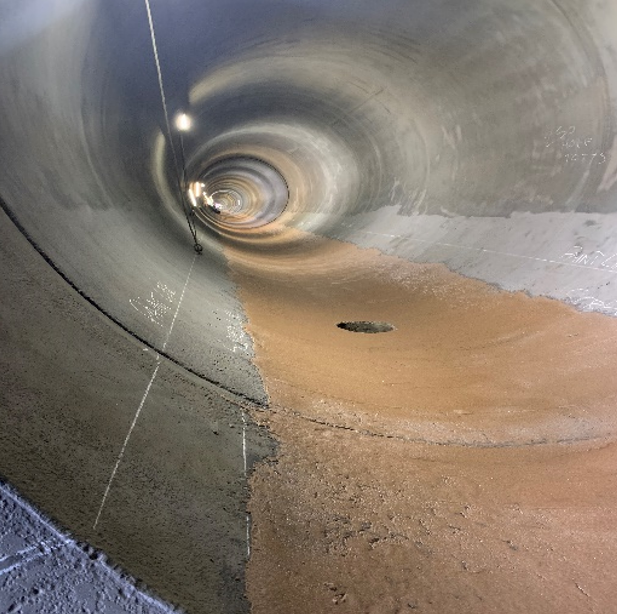
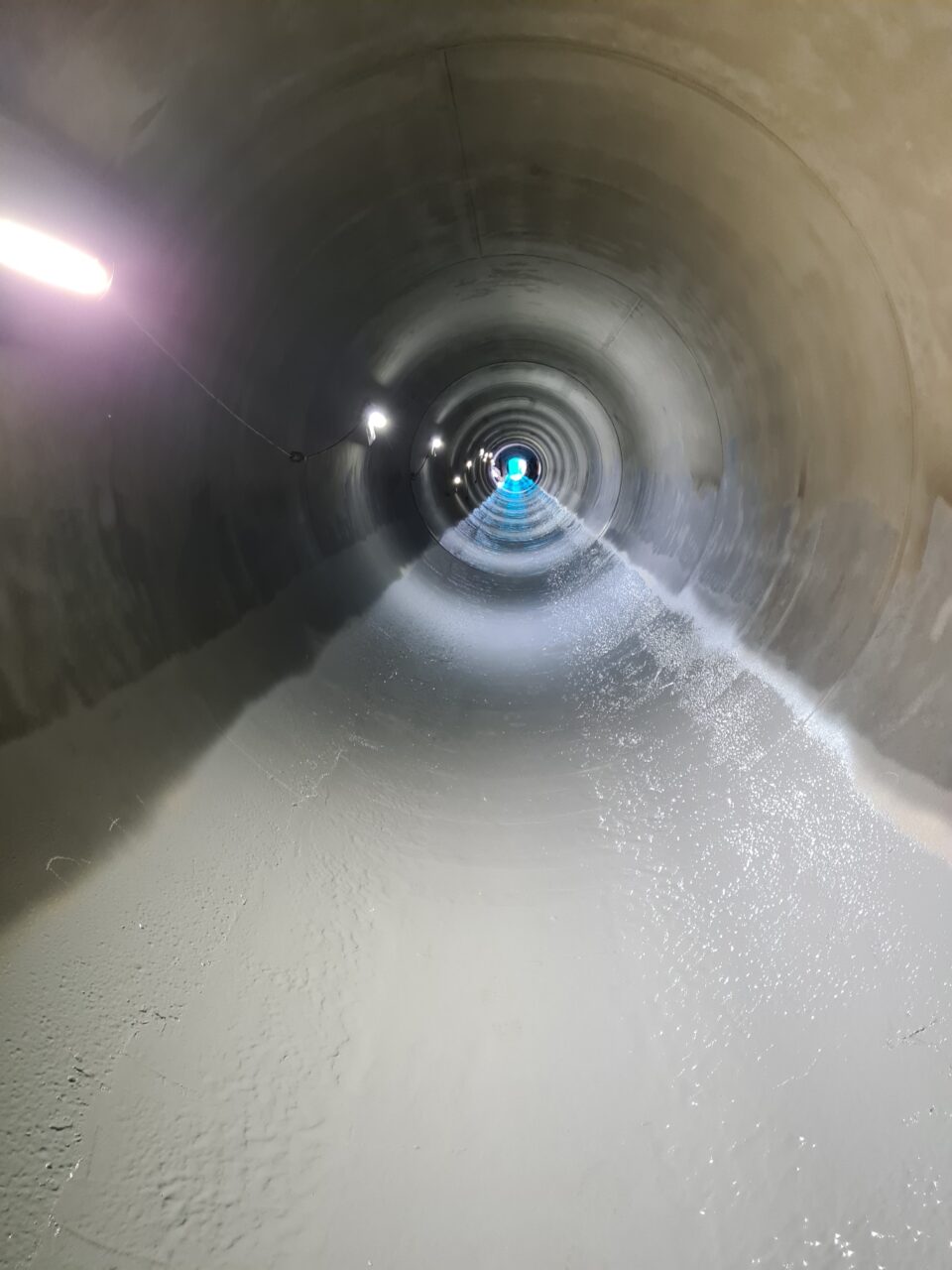
Starting in 2016 and continuing through into 2022, the Belzona systems were and continue to be deployed across the pipeline to combat the widespread corrosion – totalling a distance of 2,030m. This will help the Fabricator to not only minimise its carbon footprint, but also to make approximately £16m in financial savings as well.
In fact, this application won the Contractor a National Award for the speed in which the repair was carried out, as well as the huge savings it allowed the Client to make.
Safeguard Renewable Energy Assets with Polymeric Materials
While the CAT Report identified many areas that need urgent improvement, the Report also identified some positive areas of progress. It said: “In 2020, renewables reached a new all-time record, generating 29 percent of the world’s electricity (IEA 2021d).”
The Report goes on to say how renewable sources of power, including hydropower, biofuels and wind, amongst others, are now the “generation technologies of choice, accounting for 82 percent of new capacity installed in 2020.”
In regards to the future growth of these technologies, the Report said: “Decarbonization will be achieved by increasing the share of renewables, particularly wind and solar, in electricity generation.” More specifically, it outlines the objective to: “Increase the share of renewables in electricity generation to 55–90% by 2030 and to 98–100% by 2050.”
Considering the ongoing success and necessary future growth of these types of renewable energy technologies, it is important that investments are made into protecting vital assets. This can be achieved through the investment of polymeric repair materials and industrial coatings.
Examples of polymeric systems include:
The reconstructive composite material, Belzona 5721, has been specially developed to repair leading edge damage on wind turbines. Thanks to the system’s low-temperature cure, as low as 5°C/41°F, this ensures the turbines have a fast return to service.
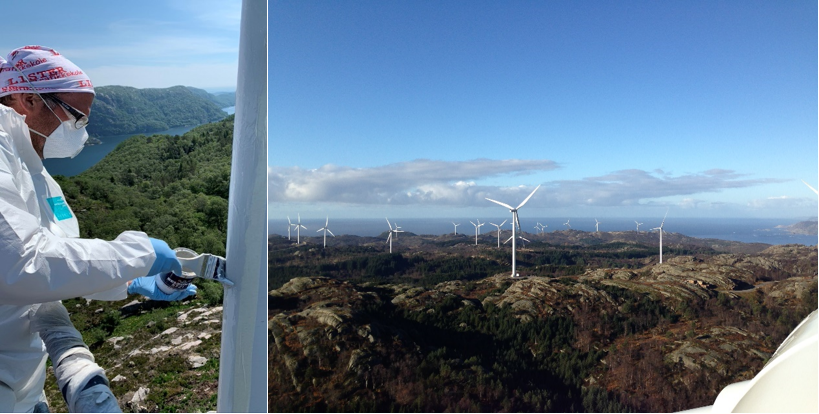
To repair damaged wind turbine shafts, the ceramic epoxy coating, Belzona 1321 (Ceramic S-Metal) can be deployed. This solvent-free coating provides excellent erosion and corrosion resistance to metal surfaces.

For hydropower applications, for areas that are particularly subjected to high levels of cavitation such as Kaplan turbine blades, Belzona 2141 (ACR-Fluid Elastomer) can be deployed. This two-part polyurethane resin offers an outstanding level of protection against cavitation at ultra-high velocities (up to 115 knots with no damage).
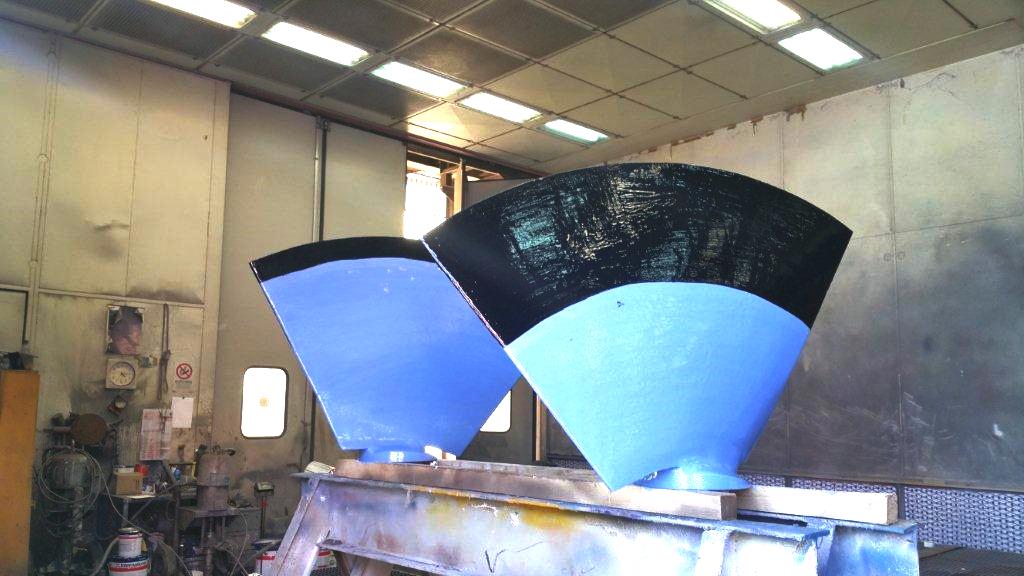
Suitable for both metallic substrates such as the external areas of penstocks as well as concrete substrates, Belzona 5811 (Immersion Grade) can offer excellent corrosion protection.

R&D Team Developing Innovative Polymeric Products Based on Sustainable Raw Materials
Another way in which polymeric technology can help industries to achieve better carbon intensity reductions is through the composition of the products themselves.
The Belzona Research and Development Team are currently in the process of formulating products made from bio-based materials that are produced from sustainable plant-based feedstocks, rather than the traditional fossil-fuel based ingredients. With their high levels of renewable carbon content, this new line of greener, more environmentally-friendly products gives asset-owners a further opportunity to offset the environmental impact of their operations.
Polymeric Systems: A Welcome Addition to the Arsenal of Carbon Mitigation Strategies
For these reasons, an increase in investment into industrial coatings and repair composites would help countries in the process of ratchetting up their 2030 emissions reduction plans, in order to achieve the net-zero emissions by 2050 target. Not only this, as discussed, these technologies are also instrumental in helping asset-owners across many different industries to make significant financial savings as well.
Indeed, Belzona recognises the critical role polymeric systems play in helping to support a more sustainable future for the planet in a way that is also financially advantageous. As such, they are committed to making ongoing investments into the development of polymeric systems that meet the ever-growing and changing demands of industries as they evolve towards a net-zero future.
Interested in purchasing Belzona’s repair composites and protective coatings?

Chloe Hirst is the Senior Copywriter at Belzona Limited and is based in Harrogate, England. She gained a Bachelor’s Degree (with Hons.) in Media and Communications (specialising in Journalism) at Goldsmiths College, University of London. Chloe regularly writes case studies and thought leadership content featuring a variety of different industries, with a special focus on the renewables sector. In both 2023 and 2024, she won the Best Manufacturing Content Creation Specialist (UK) Award as part of Acquisition International’s Influential Businesswoman Awards.



